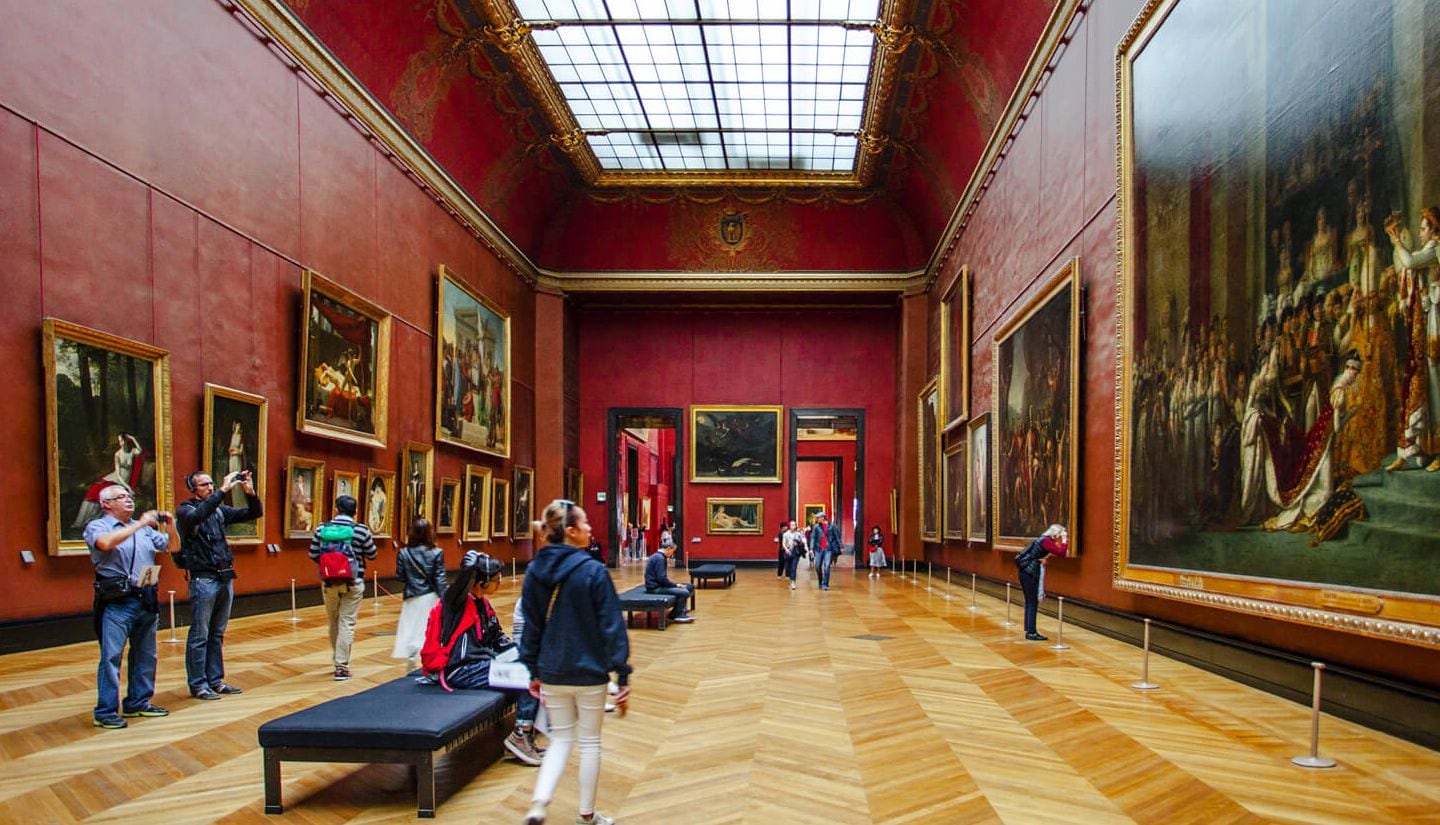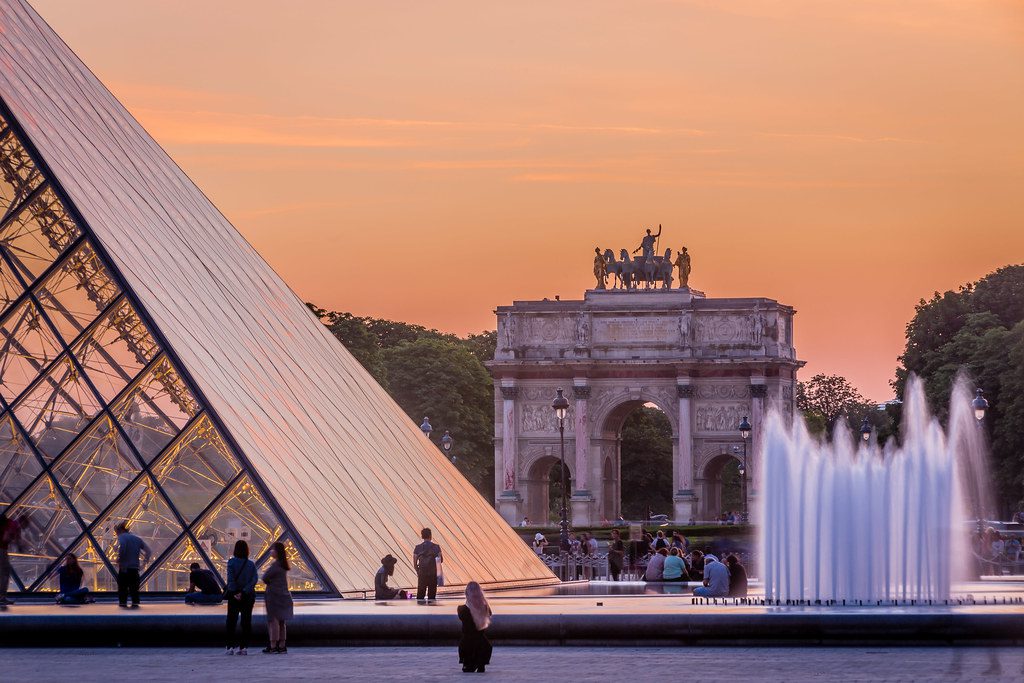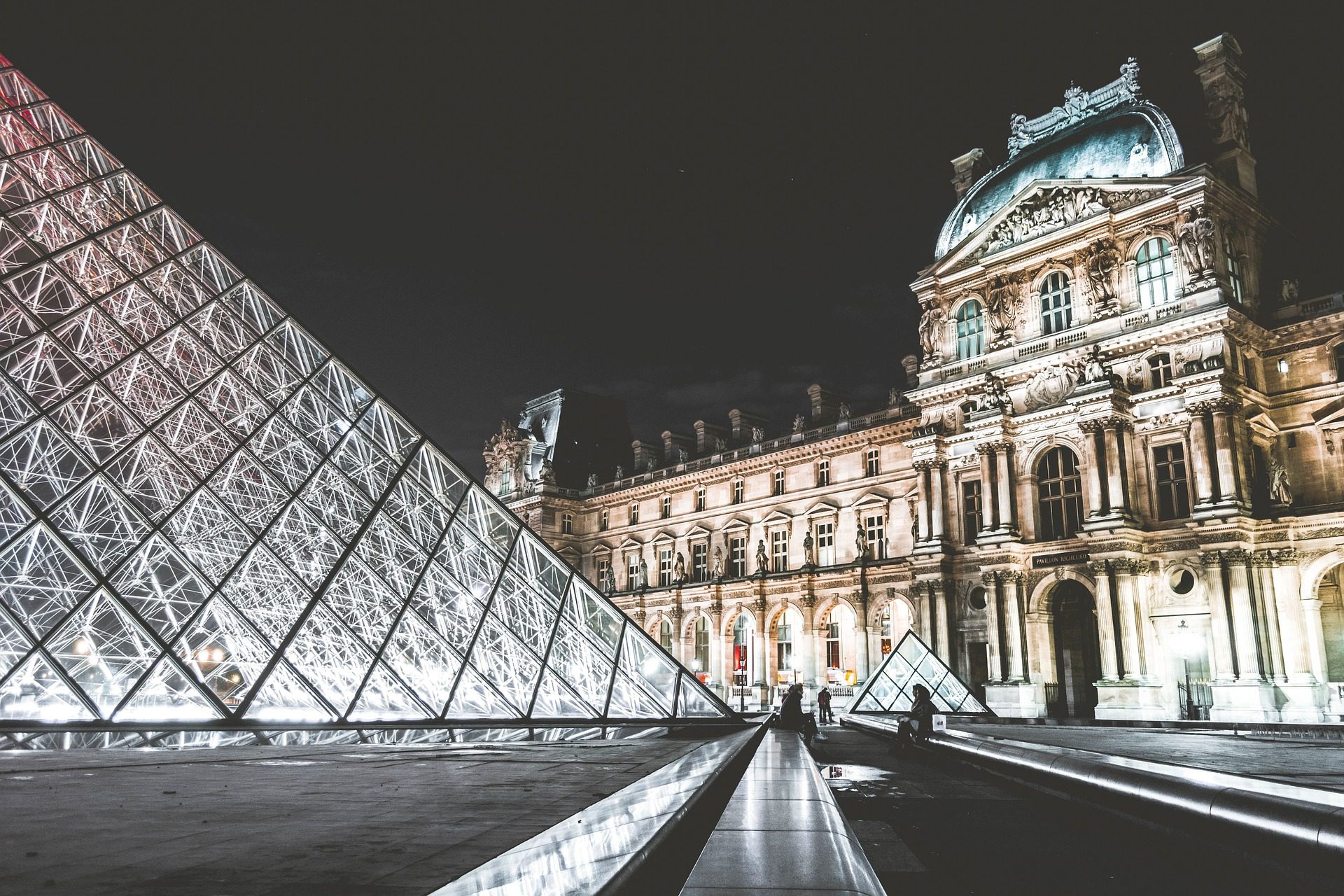The Louvre Museum
The Louvre Museum, located in the heart of Paris, is one of the world’s most famous and visited museums. It is home to over 38,000 works of art, including some of the most celebrated masterpieces in history. Its collection spans from antiquity to today and includes paintings, sculptures, decorative arts, and archaeological artifacts worldwide. In this article, we will explore the history of the Louvre, its collection, and some of its most notable works.
History of the Louvre Museum
The Louvre Museum has a long and fascinating history stretching over 800 years. Originally built as a fortress in the late 12th century, the Louvre was intended to protect the western edge of Paris from English attacks during the Hundred Years’ War. Over the centuries, the fortress was expanded and transformed, eventually becoming a royal palace in the 16th century.
The Louvre remained a royal palace for several centuries and was used as the residence of several French kings, including Francis I and Louis XIV. During this time, the palace was expanded and renovated to accommodate the needs of the royal court.

In the late 18th century, during the French Revolution, the Louvre was seized by the government and converted into a museum. The first museum to be established at the Louvre was the Museum Central des Arts in 1793, which was created to showcase works of art seized from the French nobility during the Revolution.
Over the years, the museum’s collection continued to grow, and the Louvre became one of the most important museums in the world. In the early 19th century, Napoleon Bonaparte played a crucial role in expanding the museum’s collection, commissioning several works of art, and sending expeditions to collect artifacts from around the world.
In the mid-19th century, the Louvre underwent a significant renovation and expansion by architect Hector Lefuel. Lefuel added several new wings to the museum, including the Denon Wing and the Richelieu Wing, and he transformed the palace into a museum that could accommodate the growing number of visitors.
During World War II, the Louvre was closed to the public, and many of its most valuable works of art were moved to other locations for safekeeping. After the war, the museum was reopened, and efforts were made to restore and preserve its collection.

The Louvre has continued to expand and modernize in recent years, with new galleries and exhibitions opening regularly. In 2017, a new wing dedicated to Islamic art was opened, and in 2019, the museum opened a new underground space dedicated to the museum’s ancient Egyptian collection.
Today, the Louvre Museum is one of the most important museums in the world, attracting millions of visitors each year. Its collection of works spans thousands of years and includes some of the most famous pieces in the world. From its origins as a fortress to its current status as a world-renowned museum, the Louvre has a rich and fascinating history that continues to captivate and inspire visitors from around the globe.
Collection of the Louvre Museum
The collection of the Louvre Museum is vast and diverse, spanning thousands of years of human history and encompassing works from cultures all around the world. The museum’s collection includes over 38,000 works of art, ranging from ancient artifacts to contemporary pieces.
One of the museum’s most famous collections is its collection of Egyptian antiquities, one of the world’s largest. The collection includes mummies, sarcophagi, and other artifacts from ancient Egyptian civilization, as well as the famous Rosetta Stone, which was instrumental in deciphering the hieroglyphs of ancient Egypt.
Another significant collection at the Louvre is its collection of Greek and Roman antiquities. The museum’s collection includes many sculptures, pottery, and other artifacts from ancient Greece and Rome, including the famous Winged Victory of Samothrace and the Venus de Milo.

The Louvre is also home to an extensive collection of European paintings, with works from some of the most famous artists in history, including Leonardo da Vinci, Rembrandt, and Michelangelo. Perhaps the most renowned painting in the Louvre’s collection is the Mona Lisa by Leonardo da Vinci, one of the world’s most recognizable works of art.
In addition to its collections of Egyptian, Greek, and Roman antiquities and European paintings, the Louvre also has collections of Islamic art, Asian art, decorative arts, and much more. The museum’s collections are so vast that seeing everything in a single visit is impossible.
One of the museum’s most recent acquisitions is Leonardo da Vinci’s Salvator Mundi, a Christ painting sold at auction for a record-breaking $450 million in 2017. The painting was added to the Louvre’s collection in 2019 and has since become one of the most famous works in the museum’s collection.
The Louvre is also home to several temporary exhibitions throughout the year, showcasing works from specific artists, cultures, or periods. These exhibitions offer visitors a chance to see works generally not displayed in the museum’s permanent collection.
Visiting the Louvre Museum
Visiting the Louvre Museum can be an overwhelming experience due to the sheer size and scope of its collection, which spans over 60,000 square meters and includes more than 35,000 works of art and artifacts. To make the most of your visit, planning and prioritizing the sections and works of art you want to see is essential.
First, it’s important to note that the Louvre Museum is closed on Tuesdays. On all other days, it’s open from 9 am to 6 pm, except on Wednesdays and Fridays when it stays open until 9:45 pm. The museum is open every day except for January 1, May 1, and December 25.

When planning your visit, consider purchasing your tickets online, allowing you to skip the often-long lines at the ticket counters. Several types of tickets are also available, including single-entry tickets, multiple-entry tickets, and museum passes that include access to other museums and attractions in Paris.
Once you’ve arrived at the museum, it’s best to pick up a map and decide which sections you want to visit. Some of the most popular sections of the museum include the Ancient Egyptian collection, the Greek and Roman collections, and the European paintings section. The museum’s website also provides information on current exhibitions and special events, which may influence your decision on which sections to visit.
It’s worth noting that the Louvre can get very crowded, especially during peak tourist season. To avoid the crowds, it’s best to get there early in the morning or later in the afternoon. Another option is to visit the museum on Wednesday or Friday evenings when it’s open late and less crowded.

Consider using a guide or audio tour to make the most of your visit. The Louvre offers several types of tours, including themed, family, and tours in different languages. These tours can provide valuable insights into the works of art and the museum’s history.
Taking breaks and resting your feet during your visit is also essential. The Louvre is a massive museum, and getting tired and overwhelmed is easy. There are several cafes and restaurants inside the museum where you can grab a snack or a drink and take a break from exploring.
Finally, don’t miss the lesser-known works of art in the museum’s collection. While the Louvre is home to some of the world’s most famous works of art, it also has a vast collection of lesser-known works worth exploring. Take some time to wander through the galleries and discover some hidden gems.
Conclusion
The Louvre Museum is an essential destination for anyone interested in art, culture, and history. With its vast and diverse collection, spanning thousands of years and cultures from around the world, the Louvre offers visitors a unique opportunity to explore human creativity’s rich and complex history.
Beyond its collections, the Louvre is also an architectural masterpiece, with its iconic glass pyramid and stunning Renaissance-style facades. The museum is a testament to the enduring power of human creativity and ingenuity, both in the works of art it houses and the building itself.
But perhaps the most significant thing about the Louvre is the way it brings people together. Every day, people from all over the world gather at the museum to marvel at the works of art, share their stories, and connect. In a world that often feels divided, the Louvre is a place of unity and wonder, a reminder of our shared humanity and the limitless possibilities of human creativity.
In conclusion, visiting the Louvre Museum is an unforgettable experience, offering a chance to explore some of the most significant works of art in human history, to marvel at the power and beauty of human creativity, and to connect with people from all over the world. Whether you are an art lover, a history buff, or simply curious, the Louvre is a destination that should not be missed.











